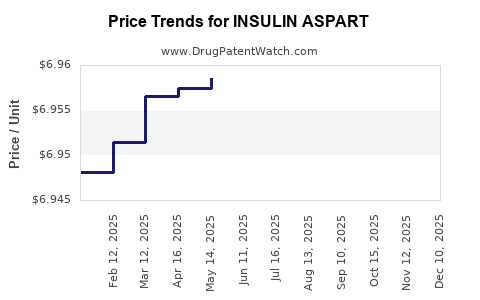Drug Price Trends for INSULIN ASPART
✉ Email this page to a colleague

Average Pharmacy Cost for INSULIN ASPART
| Drug Name | NDC | Price/Unit ($) | Unit | Date |
|---|---|---|---|---|
| INSULIN ASPART PENFILL 100 UNIT/ML CARTRIDGE | 73070-0102-15 | 8.60023 | ML | 2024-11-20 |
| INSULIN ASPART PROTAMINE-INSULIN ASPART MIX 70-30 FLEXPEN | 73070-0203-15 | 8.96138 | ML | 2024-11-20 |
| INSULIN ASPART 100 UNIT/ML VL | 73070-0100-11 | 6.94926 | ML | 2024-11-20 |
| INSULIN ASPART FLEXPEN 100 UNIT/ML PEN | 73070-0103-15 | 8.95413 | ML | 2024-11-20 |
| INSULIN ASPART PROTAMINE-INSULIN ASPART MIX 70-30 VIAL | 73070-0200-11 | 6.93980 | ML | 2024-11-20 |
| >Drug Name | >NDC | >Price/Unit ($) | >Unit | >Date |


